Simba Team Ziwani Update: 01 February 2010
De-Snaring Report for February 2010
Participants:
Nicodemus Kivindyo-Team Leader John mungai Adan Abdi Boru Okichi Joshua Muthoka
2 K W S Rangers
Areas covered
During the month of February the Ziwani team patrolled the following area: Oza Ranch, Kishushe Ranch, and Maktau area.
Findings
During the months patrols the team retrieved a total of 189 snares, out of which one hundred and fifty nine (159) were targeting big game and thirty (30) targeting small game.
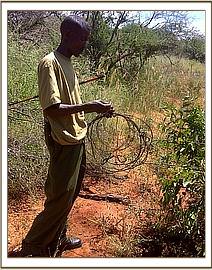
The team found several carcasses; one of a snared impala at Taita Wildlife Sanctuary, one snared Dikdik at Taita Wildlife Sanctuary, and one elephant at Taita Wildlife Sanctuary that appears to have died due to the previous drought, although the tusks were missing, it is therefore possible this is a poaching victim but due to the decomposition of the carcass it is difficult to find evidence of human inflicted injury on the body. During patrols in Oza Ranch one snared dikdik was found.
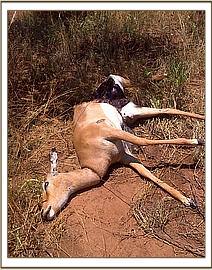
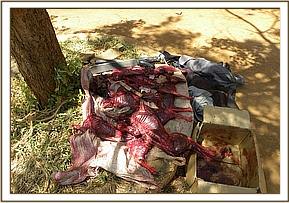
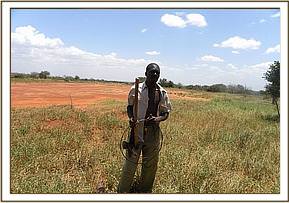
The Team found & destroyed two charcoal kilns at Taita Wildlife Sanctuary, both of which were ready to be harvested and packaged into sacs for the market. The Team informed the management of its findings.
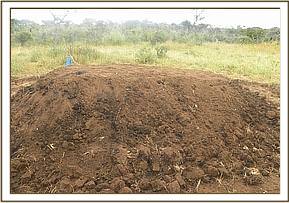
Observable Evidence
This month has shown an increase in poaching, this is partly attributed to the fact that some crop yields have failed due to the instability of the weather over the last 1 ½ years. The drought destroyed much of the land and crop production for a long period of time. Over grazing and deforestation left the land barren and now the recent heavy rains have washed away all the top soil as well as washed away crops or drowned crops. Another contributing factor is the increasing numbers of poachers that use poaching as a permanent source of income (as opposed to those that only seasonally used to poach, normally in dry season only). A lot of lamping is currently taking place with the poachers making full use of the no moon period. With all these factors combined it seems Conservation efforts in Kenya are facing some tough times ahead. The fact is that poaching activity patterns are not simple; there are many factors that drive people to take part in illegal activities including environmental factors (i.e. environmental degradation, global warming etc.) as well as Political factors. As long as people struggle to make a living and carry on living in Poverty they will always do what they can for money to support their family. Future political factors will play a role in the direction Kenya will take and we all hope better management of this country will help Conservation & future generations in Kenya. Education is important in securing this goal, the Teams community outreach efforts have proven this in many of the communities that have been involved.
Snaring methods have developed a change from the normal tactics of setting a snare between two trees, to the underground system. This involved digging a hole in the ground were wildlife pass regularly, then covering the hole with light material like leaf matter or plastic, then gently setting the snare on top of this cover.
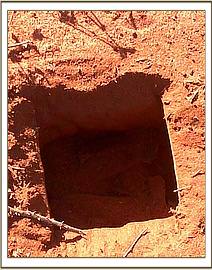
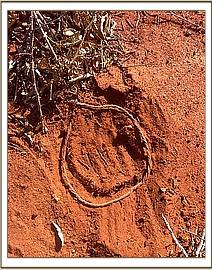
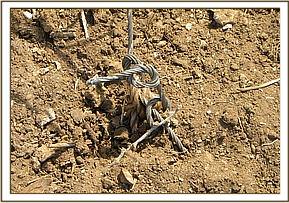

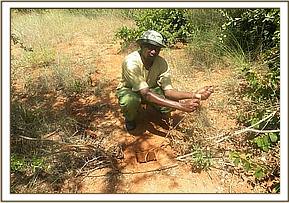
Taita Wildlife Sanctuary
This area is home for many species of animals ranging from small mammals to big mammals as well as birds. The area has a big dam which is a lifeline for many animals during the dry season. During the peak of the drought this dam nearly dried up completely and had huge amounts of wildlife congregating nearby in order to remain close to the last pool of water.
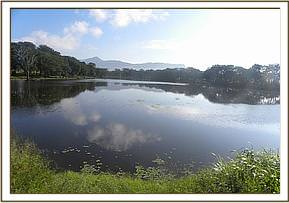
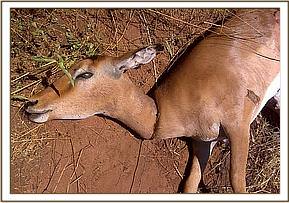
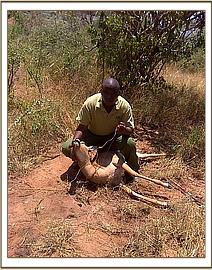
Out of the 4 poachers arrested, one was caught checking his snares and other three arrested with over 23kgs of bush meat from Dikdik and warthog all harvested within the Sanctuary.
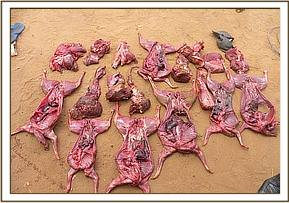
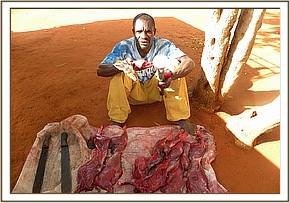
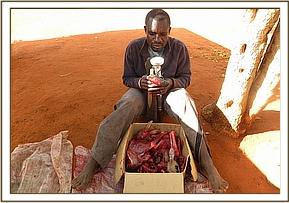
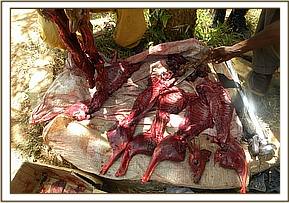
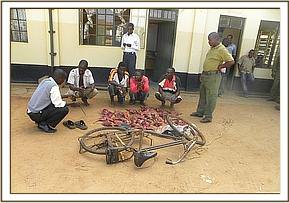

One hundred and seventy eight (178) snares were retrieved with most of them being underground snares. These snares are harder for animals to see, it is easy to understand why these snares have proved more popular. Trapping animals using the usual snaring methods runs the risk of more loss with dead animal meat getting rotten faster especially when the sun is very hot. Out of all the snares collected in the area, 159 snares were targeting big game and 19 were targeting small game and birds.
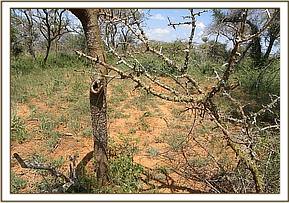

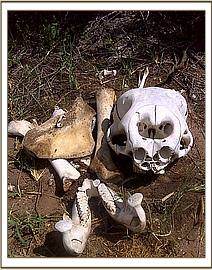
These areas lie on the southern border of Tsavo West National Park and are important wildlife migration corridors as well as permanent habitat for many animals. The team maintains close & regular watch over these areas to ensure that the wildlife remains safe.
The team arrested a poacher with bush meat using public transport buses (locally known as ‘Matatu’ vans) commuting on the Maktau - Burra road. The Van was intercepted and the bush meat was recovered as it was on its way to the market at Kwamnegwa.
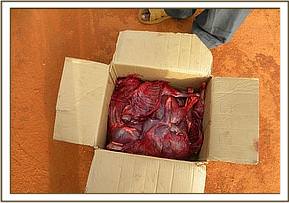
During patrols the Team found a snared dikdik carcass at Oza Ranch and retrieved eleven snares all targeting small game surrounding the dikdik carcass.
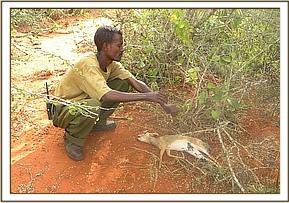
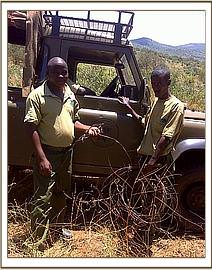
Community work
The team organized several community activities, targeting communities believed to be most likely to contribute to poaching in the areas patrolled. A conservation video show and lecture was given to Maktau Primary School on the 18/2/2010. During talks with the students they all confessed to eating dikdik meat in the past and vowed to assist in informing poaching activities and not taking part in purchasing bush meat.
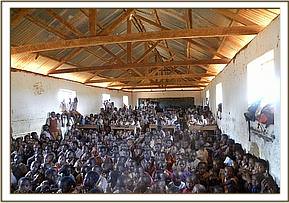

The team organized two ecological trips to Tsavo East and Tsavo West National Parks. Those taken on the School Trip were Maktau Secondary to Tsavo East on 25/2/2010 and Kenyatta High School on 26/2/2010 to Tsavo West National park. Both schools visited the main attractions in the Parks such as Luggards falls, Aruba dam, and Mudada rock in Tsavo East National park; and Mzima springs, Shetani lava, and Roaring rocks in Tsavo West National park. The students saw a lot of wildlife during their game drives. Some of the wildlife sighted included herds of elephants, a family of lions, herds of buffaloes, herds of giraffes, impalas, zebras, among others.
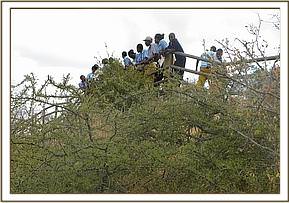
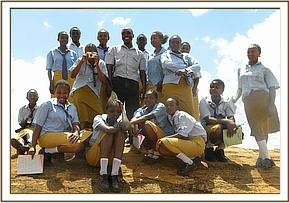
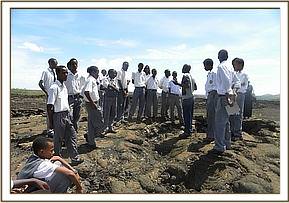
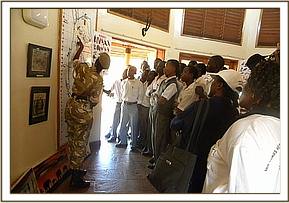

The team leader attended this year’s World Wetland day on the 2/2/2010 at Sagala Hill and planted a tree on behalf of the Trust.
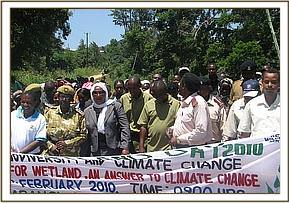
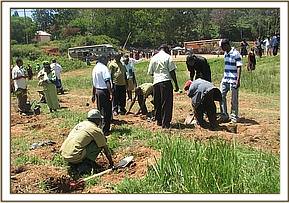
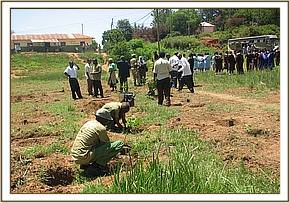

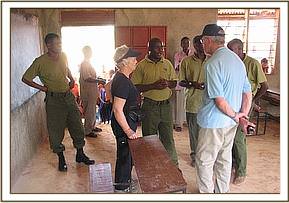
Report by Nicodemus Kivindyo. (Team Leader)